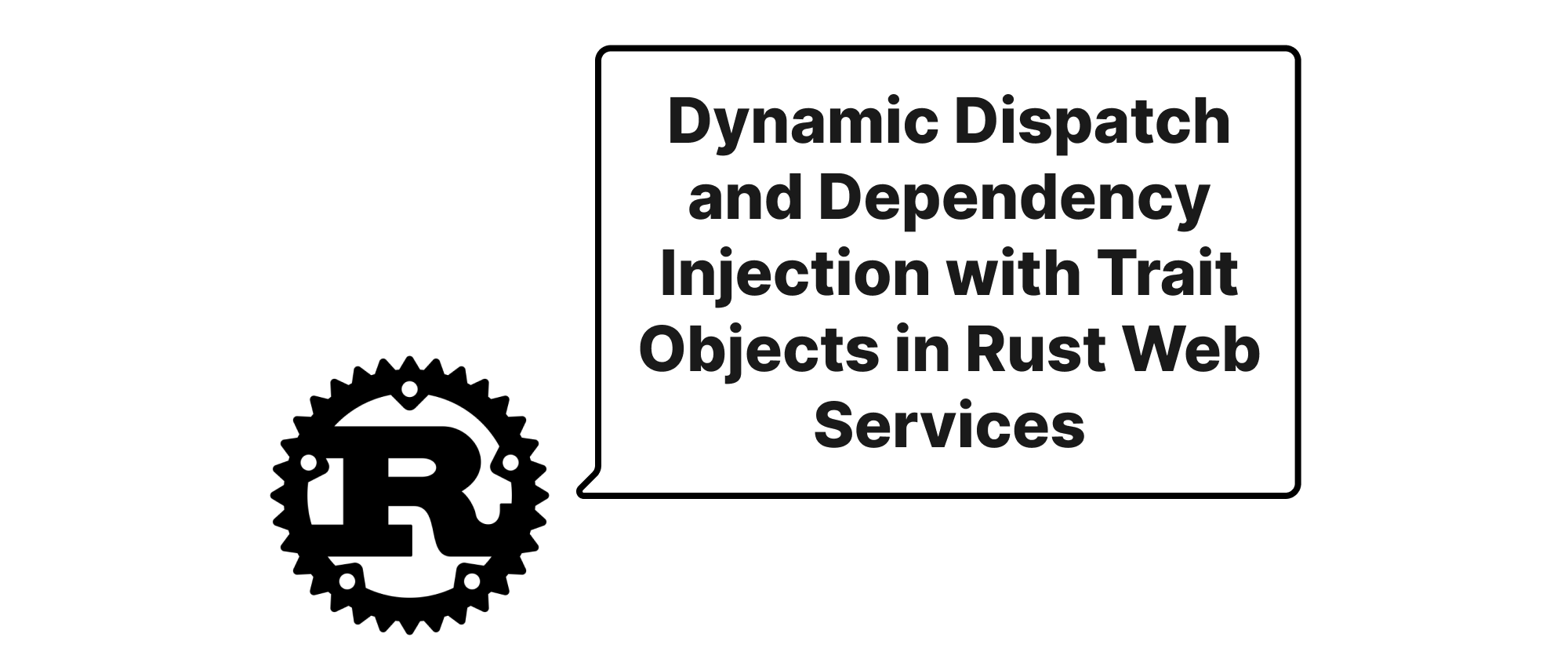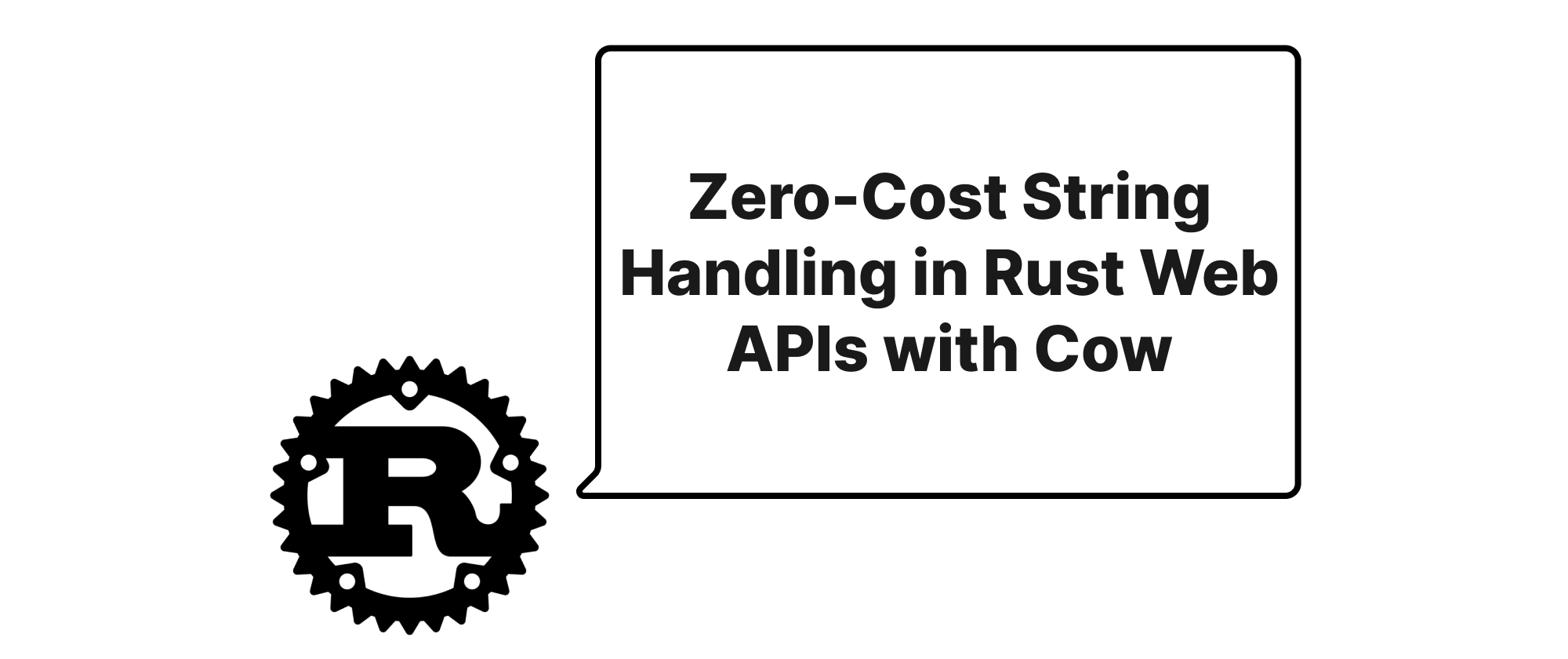Dynamic Dispatch and Dependency Injection with Trait Objects in Rust Web Services
Lukas Schneider
DevOps Engineer · Leapcell

Introduction
Building robust and maintainable web services in any language presents common challenges, such as managing dependencies, implementing flexible architectures, and ensuring testability. In the Rust ecosystem, where performance and memory safety are paramount, achieving these goals often involves leveraging its unique type system features. One such powerful feature is the trait object, which offers a mechanism for dynamic dispatch. This article delves into how trait objects can be effectively utilized within Rust web services to achieve dynamic dispatch and, by extension, facilitate dependency injection. This approach enhances the modularity, testability, and overall flexibility of your applications, moving beyond purely static dispatch when complexity demands it.
Understanding the Core Concepts
Before diving into the practical applications, let's briefly define the key concepts that underpin our discussion:
- Traits: In Rust, a trait is a language feature that tells the Rust compiler about functionality a type has and can share with other types. Essentially, it's an interface that defines shared behavior. For example, a
Loggertrait might define alogmethod. - Static Dispatch: This is the default and most performant way Rust handles method calls. The compiler knows at compile time exactly which method implementation to call based on the concrete type. This involves no runtime overhead.
- Dynamic Dispatch: Unlike static dispatch, dynamic dispatch resolves method calls at runtime. This is necessary when the exact type of an object isn't known until the program executes, but you know it implements a certain trait. Rust achieves this primarily through trait objects.
- Trait Objects: A trait object is a pointer (either
&dyn TraitorBox<dyn Trait>) that specifies that some type implements a particular trait. It "forgets" the concrete type at compile time but remembers that it implements the specified trait. This allows you to store different concrete types in the same collection or pass them as parameters, as long as they all implement the same trait. Trait objects enable dynamic dispatch because the specific method implementation to call is looked up in a vtable (virtual table) at runtime. - Dependency Injection (DI): This is a software design pattern that primarily deals with how components obtain their dependencies. Instead of a component creating its own dependencies, they are provided to it (injected). This promotes loose coupling, making components more independent, easier to test, and more reusable.
Dynamic Dispatch with Trait Objects for Dependency Injection
In the context of web services, you often encounter situations where you need to interact with external systems (databases, external APIs, message queues) or different implementations of a certain business logic. Hardcoding these dependencies makes the service rigid and difficult to test. This is where trait objects, combined with dynamic dispatch, shine for dependency injection.
Let's consider a practical example: a web service that handles user registration. This service might need to interact with a database to store user information and potentially send a welcome email.
Defining Traits for Services
First, we define traits for our core functionalities.
// src/traits.rs use async_trait::async_trait; #[async_trait] pub trait UserRepository { type Error: std::error::Error + Send + Sync + 'static; // Define an associated type for errors async fn create_user(&self, username: &str, email: &str) -> Result<String, Self::Error>; async fn get_user_by_email(&self, email: &str) -> Result<Option<User>, Self::Error>; } pub struct User { pub id: String, pub username: String, pub email: String, } #[async_trait] pub trait EmailSender { async fn send_welcome_email(&self, recipient_email: &str, username: &str) -> Result<(), String>; }
We use #[async_trait] because async functions within traits require special handling in Rust, and this macro makes it ergonomic.
Implementing Concrete Services
Now, let's create concrete implementations for these traits. For simplicity, we'll use in-memory Fakes or Mocks, which are perfect for testing or quick prototyping.
// src/implementations.rs use super::traits::{EmailSender, User, UserRepository}; use async_trait::async_trait; use std::collections::HashMap; use std::sync::{Arc, Mutex}; // For shared mutable state in our in-memory store use uuid::Uuid; // --- In-memory UserRepository implementation --- pub struct InMemoryUserRepository { users: Arc<Mutex<HashMap<String, User>>>, } impl InMemoryUserRepository { pub fn new() -> Self { InMemoryUserRepository { users: Arc::new(Mutex::new(HashMap::new())), } } } pub enum UserRepositoryError { UserAlreadyExists, InternalError(String), } impl std::fmt::Display for UserRepositoryError { fn fmt(&self, f: &mut std::fmt::Formatter<'_>) -> std::fmt::Result { match self { UserRepositoryError::UserAlreadyExists => write!(f, "User with this email already exists"), UserRepositoryError::InternalError(msg) => write!(f, "Internal repository error: {}", msg), } } } impl std::fmt::Debug for UserRepositoryError { fn fmt(&self, f: &mut std::fmt::Formatter<'_>) -> std::fmt::Result { <Self as std::fmt::Display>::fmt(self, f) } } impl std::error::Error for UserRepositoryError {} #[async_trait] impl UserRepository for InMemoryUserRepository { type Error = UserRepositoryError; async fn create_user(&self, username: &str, email: &str) -> Result<String, Self::Error> { let mut users = self.users.lock().unwrap(); if users.contains_key(email) { return Err(UserRepositoryError::UserAlreadyExists); } let id = Uuid::new_v4().to_string(); let new_user = User { id: id.clone(), username: username.to_string(), email: email.to_string(), }; users.insert(email.to_string(), new_user); Ok(id) } async fn get_user_by_email(&self, email: &str) -> Result<Option<User>, Self::Error> { let users = self.users.lock().unwrap(); Ok(users.get(email).cloned()) // .cloned() assumes User implements Clone } } // --- Console EmailSender implementation --- pub struct ConsoleEmailSender; #[async_trait] impl EmailSender for ConsoleEmailSender { async fn send_welcome_email(&self, recipient_email: &str, username: &str) -> Result<(), String> { println!("Sending welcome email to {} ({})", username, recipient_email); // Simulate an asynchronous operation tokio::time::sleep(tokio::time::Duration::from_millis(100)).await; Ok(()) } }
The Web Service Handler
Now, let's define our core business logic, the UserService. This service will take trait objects as dependencies.
// src/services.rs use super::traits::{EmailSender, User, UserRepository}; use std::sync::Arc; pub struct UserService { user_repo: Arc<dyn UserRepository<Error = super::implementations::UserRepositoryError> + Send + Sync>, email_sender: Arc<dyn EmailSender + Send + Sync>, } impl UserService { pub fn new( user_repo: Arc<dyn UserRepository<Error = super::implementations::UserRepositoryError> + Send + Sync>, email_sender: Arc<dyn EmailSender + Send + Sync>, ) -> Self { UserService { user_repo, email_sender, } } pub async fn register_user(&self, username: &str, email: &str) -> Result<String, Box<dyn std::error::Error>> { if self.user_repo.get_user_by_email(email).await?.is_some() { return Err("User with this email already exists".into()); } let user_id = self.user_repo.create_user(username, email).await?; self.email_sender.send_welcome_email(email, username).await?; Ok(user_id) } pub async fn get_user(&self, email: &str) -> Result<Option<User>, Box<dyn std::error::Error>> { Ok(self.user_repo.get_user_by_email(email).await?) } }
Notice the types for user_repo and email_sender: Arc<dyn Trait + Send + Sync>.
Arc: Allows multiple owners of the same dependency, useful when the service is shared across multiple request handlers.dyn Trait: This is the trait object. It means "any type that implementsTrait".Send + Sync: These auto-traits are required for the trait object to be safely sent between threads (Send) and shared across threads (Sync), which is critical in an async web service context. We also specified an associated type forUserRepositoryErrorbecause trait objects require all associated types to be concrete.
Integrating with a Web Framework (e.g., Actix Web)
Finally, let's see how this integrates into a simple Actix Web application.
// src/main.rs (or lib.rs) use actix_web::{web, App, HttpResponse, HttpServer, Responder}; use serde::{Deserialize, Serialize}; use std::sync::Arc; mod traits; mod implementations; mod services; use traits::{UserRepository, EmailSender}; use implementations::{InMemoryUserRepository, ConsoleEmailSender, UserRepositoryError}; use services::UserService; #[derive(Deserialize)] struct RegisterUserRequest { username: String, email: String, } #[derive(Serialize)] struct RegisterUserResponse { user_id: String, message: String, } #[derive(Deserialize)] struct GetUserRequest { email: String, } async fn register_user_handler( req: web::Json<RegisterUserRequest>, service: web::Data<UserService>, ) -> impl Responder { match service.register_user(&req.username, &req.email).await { Ok(user_id) => HttpResponse::Created().json(RegisterUserResponse { user_id, message: "User registered successfully".to_string(), }), Err(e) => { if let Some(user_repo_err) = e.downcast_ref::<UserRepositoryError>() { match user_repo_err { UserRepositoryError::UserAlreadyExists => HttpResponse::Conflict().body(e.to_string()), _ => HttpResponse::InternalServerError().body(e.to_string()), } } else { HttpResponse::InternalServerError().body(e.to_string()) } }, } } async fn get_user_handler( req: web::Query<GetUserRequest>, service: web::Data<UserService>, ) -> impl Responder { match service.get_user(&req.email).await { Ok(Some(user)) => HttpResponse::Ok().json(user), Ok(None) => HttpResponse::NotFound().body("User not found"), Err(e) => HttpResponse::InternalServerError().body(e.to_string()), } } #[actix_web::main] async fn main() -> std::io::Result<()> { // Dependency setup (composition root) let user_repo = Arc::new(InMemoryUserRepository::new()); let email_sender = Arc::new(ConsoleEmailSender); let user_service = Arc::new(UserService::new(user_repo, email_sender)); println!("Starting server on http://127.0.0.1:8080"); HttpServer::new(move || { App::new() .app_data(web::Data::from(Arc::clone(&user_service))) // Inject UserService .service(web::resource("/register").route(web::post().to(register_user_handler))) .service(web::resource("/user").route(web::get().to(get_user_handler))) }) .bind(("127.0.0.1", 8080))? .run() .await }
In the main function, we instantiate our concrete InMemoryUserRepository and ConsoleEmailSender. These concrete types are then wrapped in Arc and passed to UserService::new. Because UserService::new expects Arc<dyn Trait>, the specific concrete types are "erased" at this point, and the UserService only interacts with the trait objects. This is dependency injection in action.
Benefits of this Approach:
- Loose Coupling: The
UserServicedoes not know or care about the concrete implementations ofUserRepositoryorEmailSender. It only depends on their publicly defined interfaces (traits). This makes theUserServicehighly reusable. - Testability: You can easily swap out
InMemoryUserRepositoryandConsoleEmailSenderwith mock implementations for unit or integration testing without modifying theUserServiceitself. This is a huge win for maintaining a high level of test coverage. - Flexibility: If you decide to switch from an in-memory database to PostgreSQL or a different email service, you only need to create a new implementation of
UserRepositoryorEmailSenderand change where you instantiate it in yourmainfunction (the composition root). TheUserServicecode remains untouched. - Runtime Configurability: In more advanced scenarios, you could even dynamically load different implementations based on configuration settings at runtime, although this is less common in typical Rust applications.
Considerations and Trade-offs:
- Runtime Overhead: Dynamic dispatch inherently incurs a small runtime overhead compared to static dispatch due to the vtable lookup. For most web service scenarios, this overhead is negligible, especially when I/O operations dominate performance.
- Object Safety: Not all traits can be used to create trait objects. A trait is "object safe" if it meets certain criteria (e.g., all its methods must have
selfas the receiver, no generic parameters on methods beyondSelf). - Complexity: Introducing traits, multiple implementations, and dynamic dispatch can add a layer of complexity to the codebase. It's important to use this pattern where its benefits (modularity, testability) outweigh the added complexity. For very simple, contained functionalities, static dispatch might be perfectly sufficient.
Conclusion
Trait objects in Rust, empowered by dynamic dispatch, provide an elegant and effective solution for achieving dependency injection in web services. By decoupling service logic from concrete implementations through traits, we can build more modular, flexible, and thoroughly testable applications. While it eschews Rust's default static dispatch for a slight runtime cost, the architectural benefits in complex systems often make it a worthwhile trade-off, enabling clean code and resilient designs.


